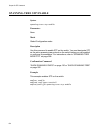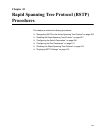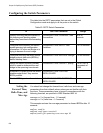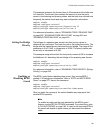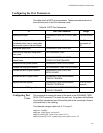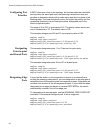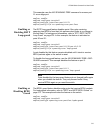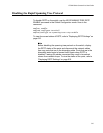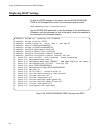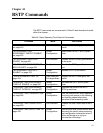Chapter 43: Rapid Spanning Tree Protocol (RSTP) Procedures
612
Configuring Port
Priorities
If RSTP discovers a loop in the topology, but the two paths that constitute
the loop have the same path cost, the spanning tree protocol uses port
priorities to determine which path to make active and which to place in the
blocking state. The lower the priority value, the higher the priority and the
greater the likelihood of a port being the active, designated port in the
event of duplicate paths.
The range is 0 to 240, in increments of 16. The priority values can be set
only in increments of 16. The default value is 128.
This example assigns ports 20 and 21 a port priority value of 192:
awplus> enable
awplus# configure terminal
awplus(config)# interface port1.0.20,port1.0.21
awplus(config-if)# spanning-tree priority 192
Designating
Point-to-point
and Shared Ports
This example designates ports 11 to 23 as point-to-point ports:
awplus> enable
awplus# configure terminal
awplus(config)# interface port1.0.11-port1.0.23
awplus(config-if)# spanning-tree link-type point-to-point
This example designates ports 26 and 27 as shared ports:
awplus> enable
awplus# configure terminal
awplus(config)# interface port1.0.26,port1.0.27
awplus(config-if)# spanning-tree link-type shared
Designating Edge
Ports
If a port on the switch is not connected to a device or a network that is
running the spanning tree protocol, you can designate it as an edge port to
reduce the time of the spanning tree convergence process. Edge ports are
not taken into account in the convergence process. If a port that has been
designated as an edge port begins to receive RSTP BPDUs, the switch
automatically considers it as a non-edge port.
To designate ports as edge ports, use the SPANNING-TREE PORTFAST
command. This example configures port 16 as an edge port:
awplus> enable
awplus# configure terminal
awplus(config)# interface port1.0.16
awplus(config-if)# spanning-tree portfast



